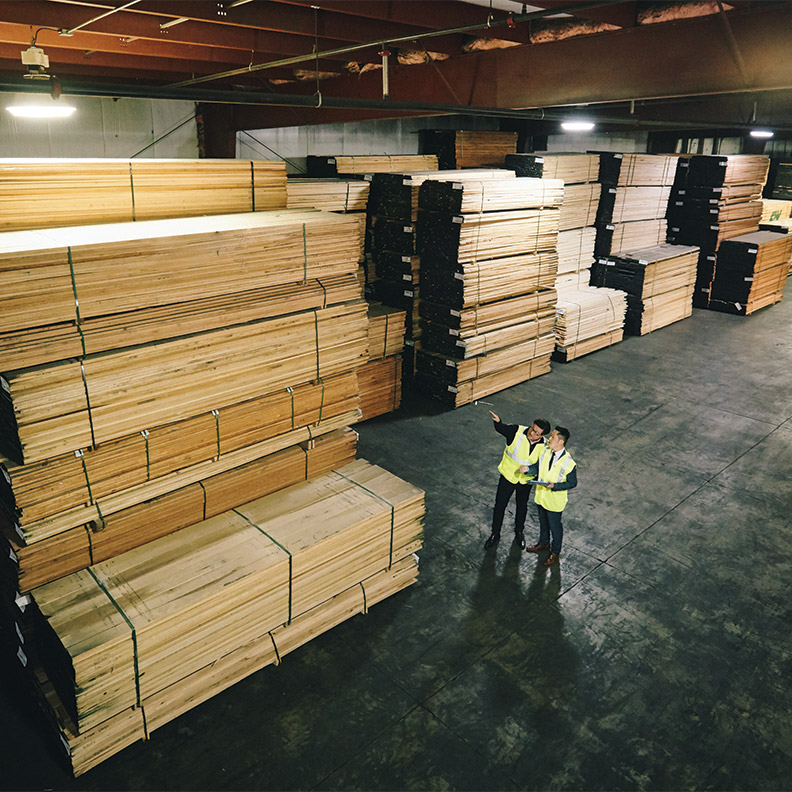The cost of health insurance as well as attracting, and retaining qualified workforce are two of the main concerns facing manufacturers today, according to a recent Enterprise Minnesota survey report. These concerns are not new. Manufacturers have been struggling with a talent shortage for years, unable to attract young skilled workers as a large portion as their workforce retire. But in our current environment, these concerns take on a new meaning.
Manufacturing companies are focused on the best ways to keep their workers safe by following health safety guidelines. But many workers in manufacturing do not have the ability to work remotely due to the nature of their job. Furthermore, manufacturers are finding the need to take extra steps to practice social distancing due to high worker-density on factory floors.
Advice from the field on keeping workers safe and engaged
Speaking to many of my customers, I get a strong impression that manufacturers across sectors treat and view their workers as indispensable. Many are finding creative ways to engage, train and hire workers during this time.
Hiring and training talent. The manufacturing industry has faced a talent shortage for years now, but this pandemic has added a new layer of challenge. Typically, new hires are done in one or two visits and it is common for manufacturers to hire candidates on the spot. With COVID-19, the hiring process is taking longer. Unable to meet in person, manufacturers are navigating this new process. To keep workers safe, some of my customers are giving virtual tours with their cellphones and pairing new hires with a mentor in lieu of new hire orientation. As technology advances, equipment maintenance is becoming more complex.
To attract and retain skilled technicians, some manufacturing companies are taking advantage of the downtime during this pandemic to upskill their workforce. Others are partnering with educational institutions to recruit talent with the latest skills. Some manufacturers are even financially supporting training schools and programs and offering scholarships.
Keeping employees safe. The priority for manufacturers since the pandemic started has always been to keep their employees healthy and safe. Companies are being very cautious because of the risks and liabilities involved if an employee tests positive for COVID-19. Many are coming up with creative solutions to prevent the spread of the virus in their facility. I’m hearing great stories of ingenuity, such as a manufacturer who installed a foot flat on the bottom of doors to reduce contact among workers, and another who constructed a device to open doors with elbows instead of the door handles.
While many manufacturing companies are considered essential and were not required to have a preparedness plan unlike non-essential companies, many are creating one. They are thinking about whether they need any accommodations in their facility, if they need to limit the number of people in the break room, if they need to have partial or staggered shifts, do they have to make it mandatory for employees to wear a mask, and how they are going to keep their workers safe when they have visitors. Manufacturers are worried if they should operate at full capacity and if they do, what should they do and what would that look like. Some of my manufacturing customers are rotating shifts and having their workers work 14 days on and 14 days off or work two weeks in a row and then have one week off.
Building unity and community. A manufacturer in the Willmar area organized a virtual concert for vendors, customers and employees to foster unity and hope. It was a successful event with local artists from the Twin Cities headlining the concert and provided a good opportunity for everyone invited to bond with one another during a very difficult and uncertain time. Another manufacturer had a spirit week with daily themes and invited workers across the organization to submit photos whether it is from the production floor, their office or home.
Managing risks and disruption to productivity
It is without a doubt that the global pandemic has a significant impact on the ways manufacturers think about the safety of their workers. It has also shaped the ways they think about the role of technology and automation in their operation.
Remote capabilities. Many manufacturers are realizing the benefits of remote capabilities. One company shared their experience where workers wanted additional software to work remotely before COVID-19, but management said they did not need it. Because of the pandemic, the company had to upgrade its remote capabilities. It was a huge win for both the workers and the company. Prior to installing teleconferencing capabilities, workers had to walk across the factory floor to find a supervisor. With upgraded remote capabilities, the workers can teleconference with supervisors and offer diagnostic solutions via their cellphones or tablets, which led to an increase in productivity for the company.
Automation and self-directed equipment. Manufacturers initially hesitant about investing in automation are now reassessing its costs-benefits in the wake of the pandemic and the need to keep their employees safe. The ability to continue production without workers being on-site is critical as manufacturers think of creative ways to practice social distancing while maintaining a reasonable level of productivity. Companies that have invested in automation before this pandemic are seeing benefits, and increasingly, many more are recognizing the value of robotics and self-directed equipment.
Manufacturers who have connected automated equipment to AI-equipped asset monitoring and management software were able to monitor production remotely without human intervention. This in turn allowed them to minimize health risk and continue production at the same level of efficiency before the pandemic. For some of my customers, automation has allowed them to redirect workers to higher-priority tasks to meet changing demands during this global health crisis.
Intelligent digital factory capabilities allow manufacturers the ability to quickly pivot into a new line of business or adapt operations to meet changing demands and consumer needs during a global crisis. Manufacturers with production facilities that are sensor-equipped and interconnected, and networked together with their computers’ industrial applications are uniquely positioned for flexibility and adaptability. For instance, manufacturers who had to quickly pivot to producing medical equipment were able to do so by integrating intelligent factory assets and processes into a large supply chain network to get the materials required to produce medical supplies.
We are stronger together
As we continue to navigate through these unmatched times, I am encouraged by the support networks manufacturers have created among themselves. This pandemic has brought them closer together and as a group, they are sharing resources, exchanging information and brainstorming solutions on ways they can enhance their preparedness and keep their workers safe.
As is so often the case in times of crisis, manufacturers rise-up and lead. They write the narrative, taking decisive action in dealing with the crisis at hand, while at the same time, innovating and preparing for tomorrow.

